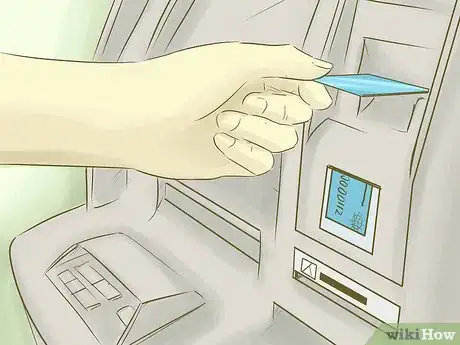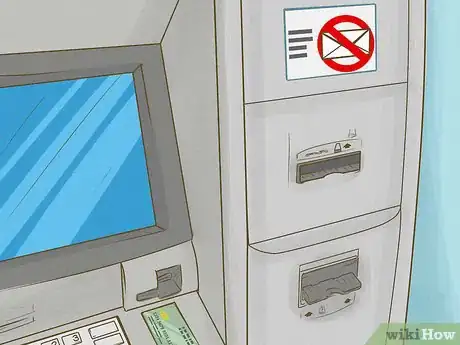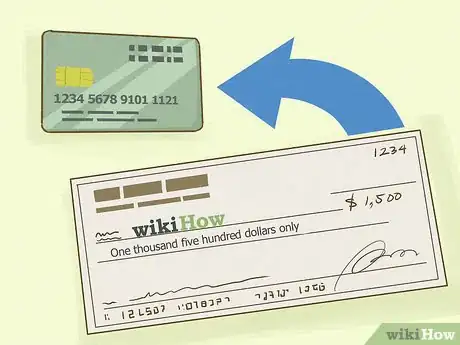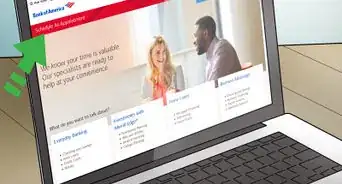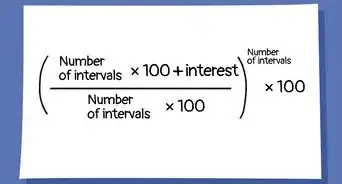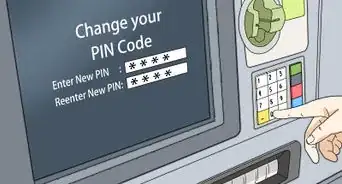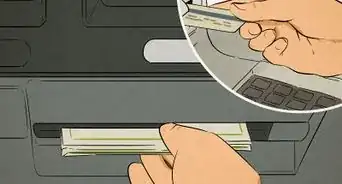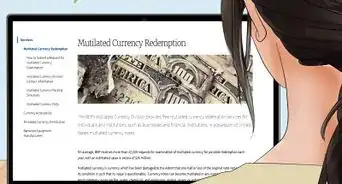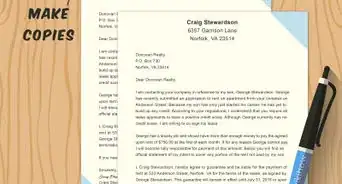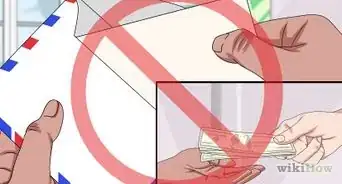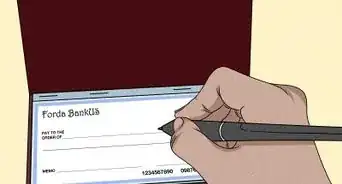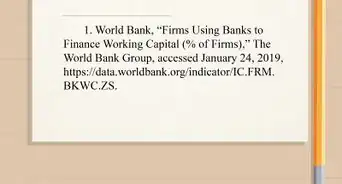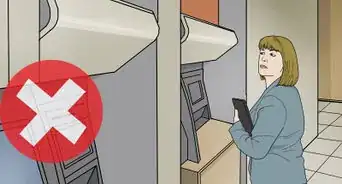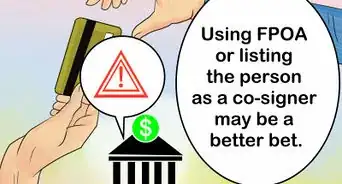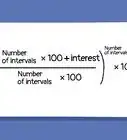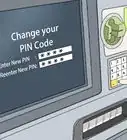This article was co-authored by Michael R. Lewis. Michael R. Lewis is a retired corporate executive, entrepreneur, and investment advisor in Texas. He has over 40 years of experience in business and finance, including as a Vice President for Blue Cross Blue Shield of Texas. He has a BBA in Industrial Management from the University of Texas at Austin.
wikiHow marks an article as reader-approved once it receives enough positive feedback. This article received 15 testimonials and 87% of readers who voted found it helpful, earning it our reader-approved status.
This article has been viewed 1,270,150 times.
People usually think of ATMs (Automated Teller Machines), or cash-points, as a place for withdrawing cash from a bank account. However, many ATMs allow you to deposit money as well. The process varies by bank and ATM, and you should refer to your bank’s policies and follow the prompts at the ATM, but the following steps are generally relevant to most ATM deposit transactions.
Steps
Depositing with an Envelope
-
1Verify that the ATM accepts deposits placed in an envelope. Smaller ATMs and those at non-bank locations such as convenience stores or restaurants may not have this function. If it does not have a marked slot for dispensing and/or accepting envelopes, it does not accept envelope deposits.
- Some modern bank ATMs may only accept non-envelope deposits. See elsewhere in this article for information on making such deposits.
- Your bank may not permit deposits at ATMs not affiliated with it. Check your financial institution’s policies.
-
2Insert your ATM or debit card and enter your PIN number. This part of the process is exactly the same as when you withdraw cash.
- Locate the “deposit” tab on the screen or corresponding button indicated by the screen (on older machines). If there is no deposit option, you’re out of luck on this ATM.
Advertisement -
3Endorse any checks to be deposited. Sign them on the back in the marked area.
- Add “for deposit only” below your signature for added security. If you lose this endorsed check, it can only be deposited, not cashed.
-
4Prepare a deposit slip. If you are using a slip from your checkbook, your name, address, and account number should already be on the check.
- If you are using a blank deposit slip, like those available in a bank branch, fill out your name, address, and account number. Add the date to any type of deposit slip.
- Enter the total amount of cash to be deposited on the marked line, and individually list checks in the provided slots on the front (and, if needed, back) of the slip.
- Enter the total amount of all checks and cash to be deposited on the provided line.
- You don’t need to sign a deposit slip when depositing funds into an ATM. A signature is only required when you seek cash back from a deposit made at a teller window.
- You may want to sign your checks and prepare your deposit slip ahead of time, for convenience and safety. Limiting your time at the ATM is safer and less likely to annoy those in line behind you.
-
5Use the deposit envelope provided by the ATM. Older machines may have a small door that you lift open to reveal deposit envelopes, while newer machines may just spit them out of a slot.
- Even if you have your deposit organized into an envelope, transfer it to the one provided by the machine.
- Make sure you insert all your checks, cash, and the deposit slip into the envelope. Seal it securely.
- Write in any information, such as name, date, and the deposit amount, requested on the outside of the envelope (as indicated by labeled blank lines).
- The ATM may ask you if you need more time while preparing your deposit. Press the indicated button to give yourself added time to get everything in order.
-
6Insert your completed and sealed envelope and verify your deposit. The slot where you insert the envelope should be clearly marked and may be indicated by flashing lights. It may also be the same slot where you received your deposit envelope.
- When prompted by the ATM, either before or after making the actual deposit, enter the total amount of your deposit. Write the total amount down on a scrap of paper beforehand if you need a reminder.
- Take care to be accurate. The bank should be able to correct any discrepancies, but it is quicker and easier to get things right the first time.
- Confirm that you want a receipt and keep it for your records, at least until your deposits clear.
-
7Wait for your deposits to clear. Deposits of cash or check by envelope are manually counted and entered into your account, so funds will not be available immediately.
- A common wait time for fund availability from an ATM deposit is the second business day after the deposit. That is, if you deposit the funds on Monday, they will be available Wednesday. But, if you deposit them Sunday (not a business day), it will also be Wednesday. Banks are required to consider ATM deposits made by noon to be made that business day.[1]
Depositing Without an Envelope
-
1Verify that the ATM accepts no-envelope deposits. This is increasingly becoming the standard in ATMs at bank branches, and it is becoming more common in other locations. Look for notices on the screen or on the machine itself.
- No-envelope ATMs usually have clearly-marked, separate slots for checks and cash.
- Insert your card, enter your PIN, and follow the prompts to make a deposit. The ATM will verify at some point whether you can make no-envelope deposits.
-
2Endorse and prepare your checks. You will not need a deposit slip for a no-envelope transaction.
- You may want to add up the total dollar amount of your check deposits beforehand, in order to compare to the total tabulated by the ATM. You will be able to go through deposited checks individually if there is a discrepancy.
-
3Feed checks into the marked slot when prompted. Many machines can read the checks regardless of orientation, but it can’t hurt to stack your checks neatly and facing in the same direction.
- You do not need to feed the checks individually at most newer machines. The maximum number of checks you can feed at once should be displayed on the screen or machine; one national bank chain states a maximum of 30 checks at once.
-
4Make sure that the total amount is correct and complete your transaction. You should be able to go through checks individually and make corrections if needed.
- Many machines offer the option of printing an image of the front of your check(s) on your receipt. Use this option if you’d like an added layer of proof of deposit for your records.
- Rejected checks -- those with unreadable printing or handwriting, for instance -- should be returned to you at the end of your transaction. Contact the bank if this does not happen.
-
5Deposit cash into the appropriate slot according to the ATM’s limit. One common maximum for a stack of cash is 50 bills.
- Again, the machine should be able to read cash in any direction, but a neat stack can only speed the process.
- Unlike envelope deposits, where they can be deposited together, cash and checks will need to be deposited in separate transactions. Deposit one, indicate you’d like to make another transaction when prompted on the screen, then deposit the other.
-
6Find out when deposits will be credited to your account. This will vary by financial institution.
- One advantage of non-envelope cash deposits is that the money is immediately available in your account because it has been scanned and confirmed. Envelope cash deposits, on the other hand, need to be opened, counted, and entered. If you need to add funds to your account right away and don’t have access to a bank branch, a non-envelope cash deposit may be your best bet.
- Check deposits will still require time to clear after being posted; one national bank considers non-envelope check deposits made by 8 pm to be posted that business day, and it should clear on the second business day after (posted Monday, cleared Wednesday, for example).
Expert Q&A
Did you know you can get premium answers for this article?
Unlock premium answers by supporting wikiHow
-
QuestionHow long will it take the money I deposit to appear in my account?
 Michael R. LewisMichael R. Lewis is a retired corporate executive, entrepreneur, and investment advisor in Texas. He has over 40 years of experience in business and finance, including as a Vice President for Blue Cross Blue Shield of Texas. He has a BBA in Industrial Management from the University of Texas at Austin.
Michael R. LewisMichael R. Lewis is a retired corporate executive, entrepreneur, and investment advisor in Texas. He has over 40 years of experience in business and finance, including as a Vice President for Blue Cross Blue Shield of Texas. He has a BBA in Industrial Management from the University of Texas at Austin.
Business Advisor Each bank has a policy regarding when you can access funds after you make deposit through an ATM. Generally, funds will be available on the second business day after deposit, although the bank may allow partial withdrawals in the interim. Factors that affect fund availability include the nature of the deposit (cash, electronic funds, paper checks), the amount of funds deposited, the customer's history and relationship to the bank, and the source of the deposit (bank-owned or independent ATM). Check with your bank to identify their specific policies and procedures regarding availability of deposits.
Each bank has a policy regarding when you can access funds after you make deposit through an ATM. Generally, funds will be available on the second business day after deposit, although the bank may allow partial withdrawals in the interim. Factors that affect fund availability include the nature of the deposit (cash, electronic funds, paper checks), the amount of funds deposited, the customer's history and relationship to the bank, and the source of the deposit (bank-owned or independent ATM). Check with your bank to identify their specific policies and procedures regarding availability of deposits. -
QuestionCan I deposit money at an ATM without a debit card?
 Michael R. LewisMichael R. Lewis is a retired corporate executive, entrepreneur, and investment advisor in Texas. He has over 40 years of experience in business and finance, including as a Vice President for Blue Cross Blue Shield of Texas. He has a BBA in Industrial Management from the University of Texas at Austin.
Michael R. LewisMichael R. Lewis is a retired corporate executive, entrepreneur, and investment advisor in Texas. He has over 40 years of experience in business and finance, including as a Vice President for Blue Cross Blue Shield of Texas. He has a BBA in Industrial Management from the University of Texas at Austin.
Business Advisor
Warnings
- Be careful. It is best to keep your PIN and other financial details hidden outside ATMs. ATM locations are sometimes prone to scamming and robberies.⧼thumbs_response⧽
- Don't forget to take your card with you when finished.⧼thumbs_response⧽
References
About This Article
To deposit money using an ATM, insert your debit card into the machine and enter your PIN number when prompted. Next, choose “Deposit” from the menu options. Don’t forget to endorse your check by signing the back! If the ATM requires an envelope, fill out a deposit slip and put it in the envelope with your check. If an envelope isn’t required, simply insert your check and follow the prompts on the screen. To find out how long it usually takes for your deposit to clear, keep reading!

